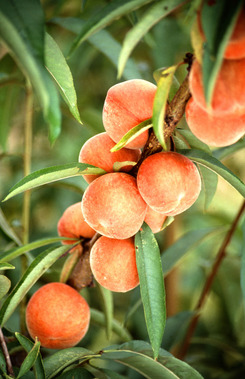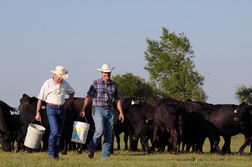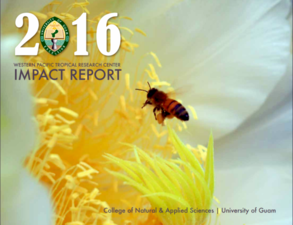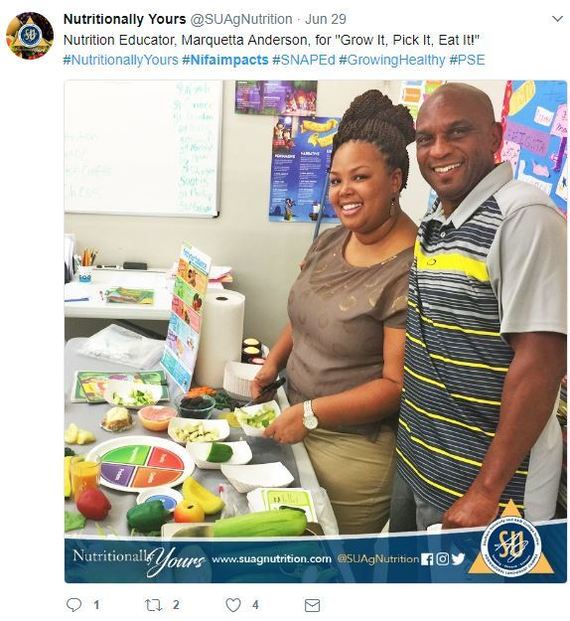|
Having trouble viewing this email? View it as a Web page..

|
|
|
Fresh from the Field is a weekly album showcasing transformative impacts made by grantees funded by the National Institute of Food and Agriculture.
July 6, 2017
|
|
Success Stories
 Peachy keen in South Carolina
When Clemson University’s Extension and fruit specialist Juan Carlos Melgar suggested putting a paper bag over a peach
to detract insects and diseases during production farmers laughed.
Melgar began trial studies with funding from NIFA’s Southern
Sustainable Agriculture Research & Education grant. The results showed that the
technique protects the fruit from devastating brown rot, marauding insects like
plum curculio, and even hungry birds. Producers and backyard growers started
paying attention.
Researchers found that leaving the fruit unbagged in an organic
orchard produced a 20 percent yield. Adding the bags increased the yields 10-15
percent, and spraying the fruit before bagging added another 35 percent in
yield. In addition, yields were higher in the organic orchard than the
conventional orchard.
Read more about Clemson's peaches. Image provided by Keith Weller at USDA- ARS.
|
 Inclusivity at Missouri 4-H
4-H is about more than barnyard animals. It's about emerging sciences such as like rocketry and geographic information systems. 4-H is also about leadership,
citizenship, and many other things, but one quality truly stands out: 4-H is
about inclusion. In Missouri, 4-H clubs take an inclusive approach to working
with youth who have special needs. 4-H staff, volunteers, and parents who understand how to help youth with special needs have meaningful experiences. The 4-H activities include participation in competitive events at county fairs,
exhibits, camps, and more.
Read the 4-H blog. Image provided by University of Missouri.
|
News Coverage
 The D-A-R-T way to handle cattle
It is relatively easy to determine when a dependent child is sick
as they often just tell you, but what about livestock who are
dependent upon cattle producers to correctly assess their well-being? It can
be tough to tell a moo from a moan.
“One way to do it is to use the D-A-R-T system, an acronym that
literally helps producers to keep in mind likely tell-tale signs of poor animal
health,” said Barry Whitworth, veterinarian and Oklahoma State University
Cooperative Extension food animal quality and health specialist.
The letter “D” stands for depressed; the letter “A” stands for
appetite; the letter “R” stands for respiration, and the letter “T” stands for
temperature.
Read the Oklahoma Farm Report. Image provided by Alice Welch USDA.
|
 Guam ag resources
The University of Guam’s Western Pacific Tropical Research Center Impact Report highlights
the research, extension, and education success stories of 2016.
Inside you will find stories
about Guam’s latest invasive insect, the greater banded hornet, and how it
might affect humans and animals. Other topics include variety trials
with kale and bell peppers, and other highlights of Guam’s tropical
agricultural industry.
Read the University of
Guam's 2016 impact report. Image provided by Olympia Terral at the Guam Western Tropical Research Center.
|
Video
 Georgia peanuts
A peanut plant cracks through
the soil, and over time grows to join other plants eventually lapping the field's
row middles. It’s something peanut farmers watch each day of each season. But
they don’t see it happen this fast.
University of Georgia
Extension peanut specialist Scott Monfort last year set up four Plotwatcher Pro
trail cams to watch over four different peanut research plots in the southern region of the state. The cameras were able to capture daily pictures of the plots from cracking to lapping.
Watch the Southeast Farm Press video. Image provided by USDA ARS peanut lab.
|
Tweet of the Week
#NIFAIMPACTS

|
|

For more NIFA Impacts, visit nifa.usda.gov/impacts or the Land-Grant University Impacts website. Send us your NIFA-funded impacts at impactstories@nifa.usda.gov or share them on Twitter @USDA_NIFA, #NIFAImpacts.
NIFA invests in and advances agricultural research, education, and extension and promotes transformative discoveries that solve societal challenges.
Fresh from the Field is a weekly compendium of news and information that may be of interest to land-grant and non-land-grant universities, NIFA stakeholders, and other subscribers.
Editor: Falita Liles, Co Editor: Carlos Harris
|
|